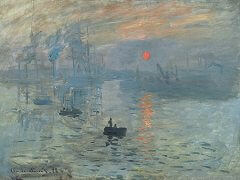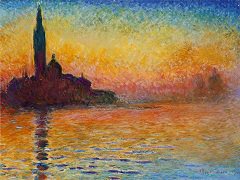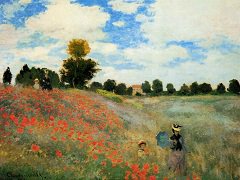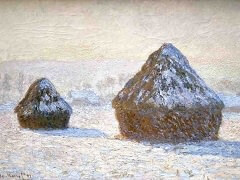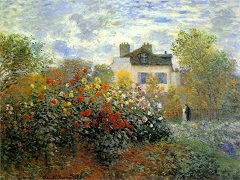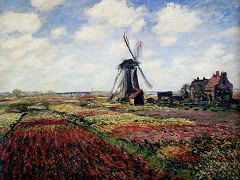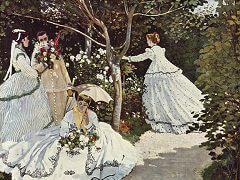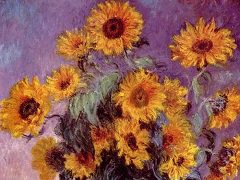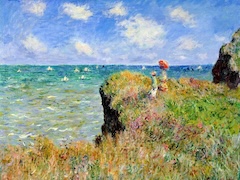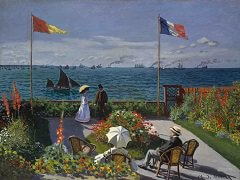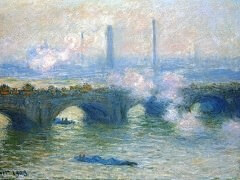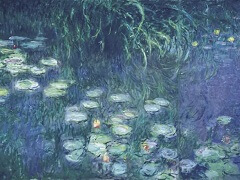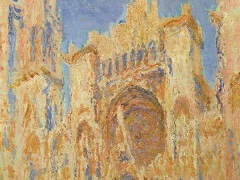Irises, 1926 by Claude Monet

Irises, 1926, is among the last that Monet worked on. Even at this late stage in his career he was still developing as an artist and trying new techniques. This is one of the many reasons why he has gained the respect of critics over the years. With Iris, Monet has moved in to give an intimate view of the plant. The background is a swirl of color that is indecipherable as representative of anything in particular, so the plant exists without any distractions to the eye. It is a depiction of an iris in its purist form. Unlike his earlier paintings, it is not the amazing violet and lilac tones of the flowers that have caught Monet's eye. Instead it is the shape of the leaves; their greenness, and even orange on one leaf, that are the focus of the painting.
Iris is a popular flower among Impressionists. Unlike Irises by Vincent van Gogh, what interests Monet, as can be seen in work dating back to the beginning of his career, is the grid of horizontal and vertical lines created by the leaves. In this painting, the sweep of the leaves forming horizontal and vertical lines that cross each other. The informality of the symmetry is further emphasized by the curves of the leaves, ensuring that the whole has a softened and harmonized effect.

